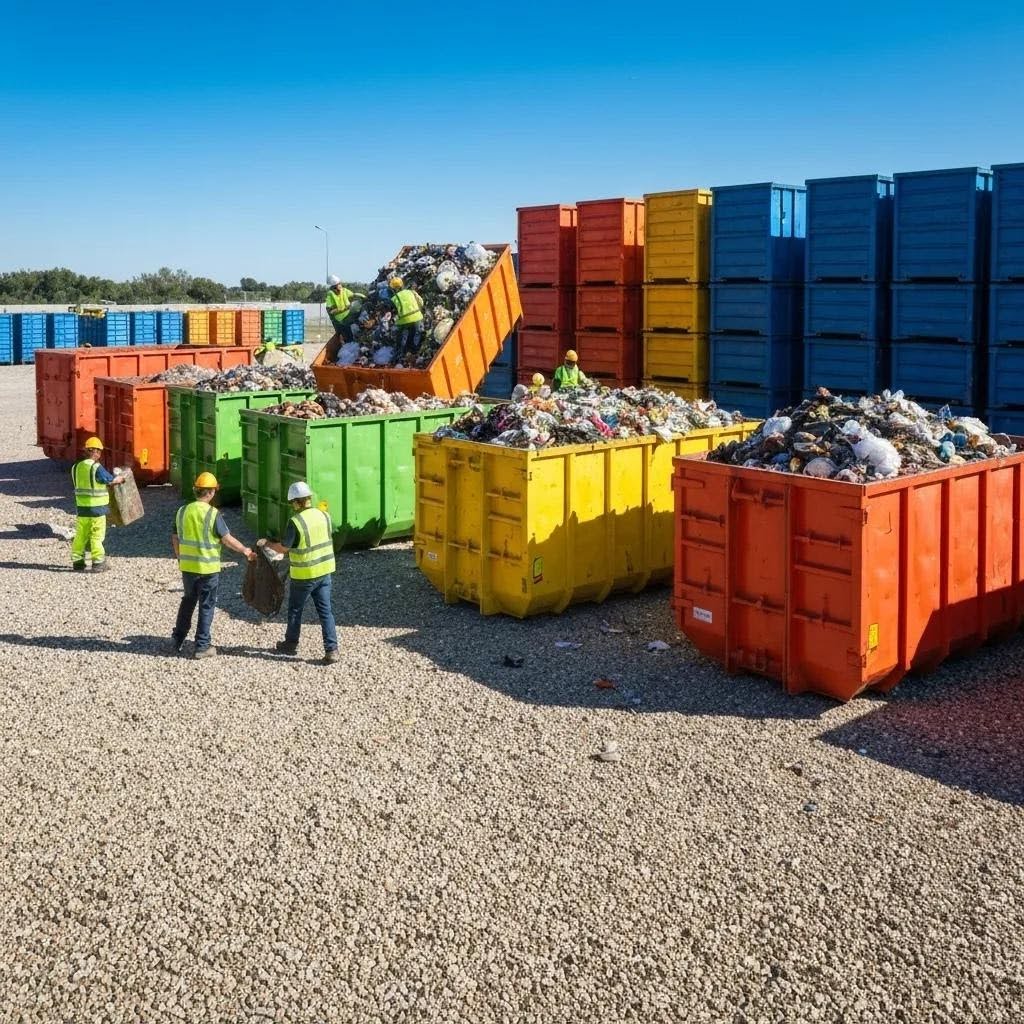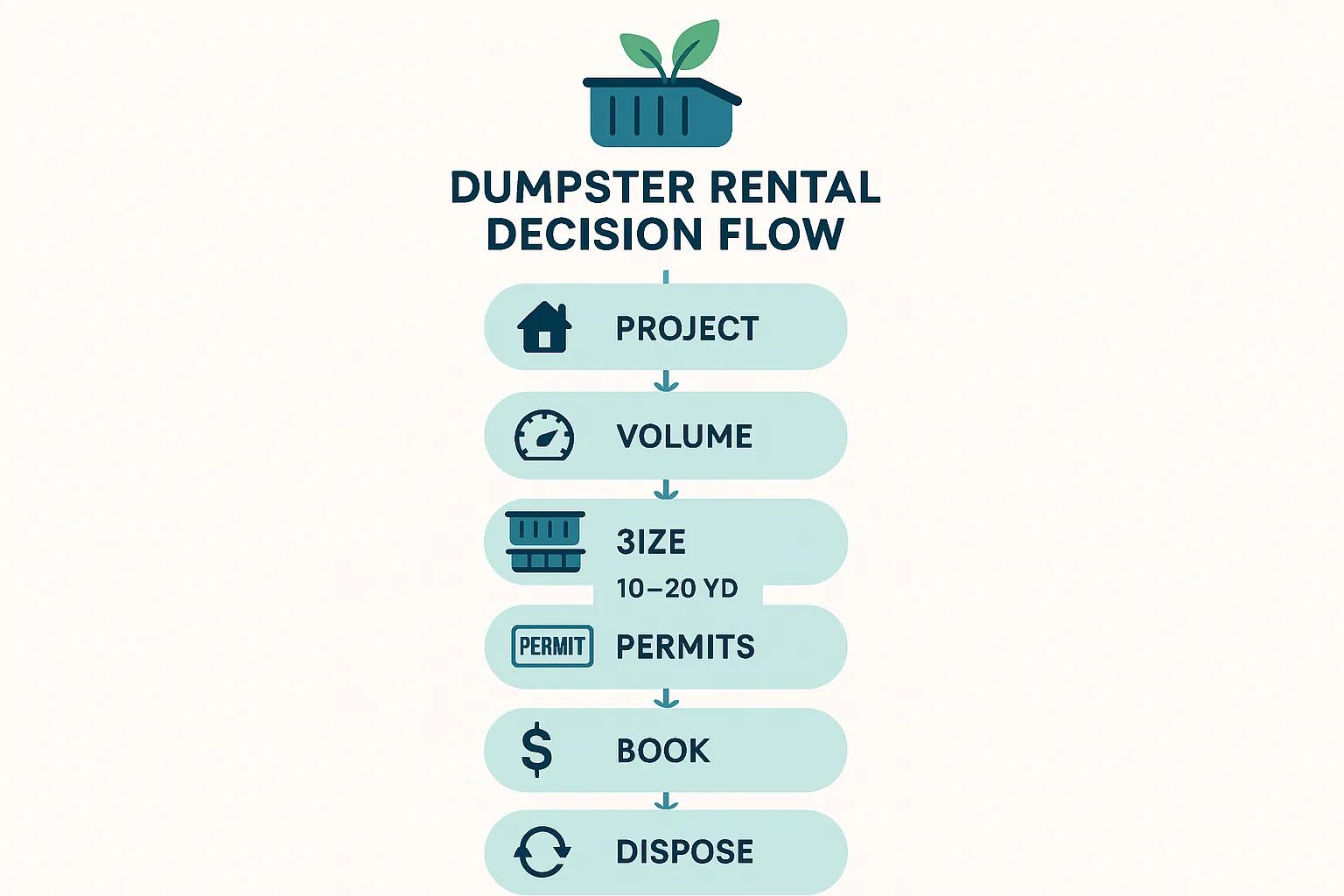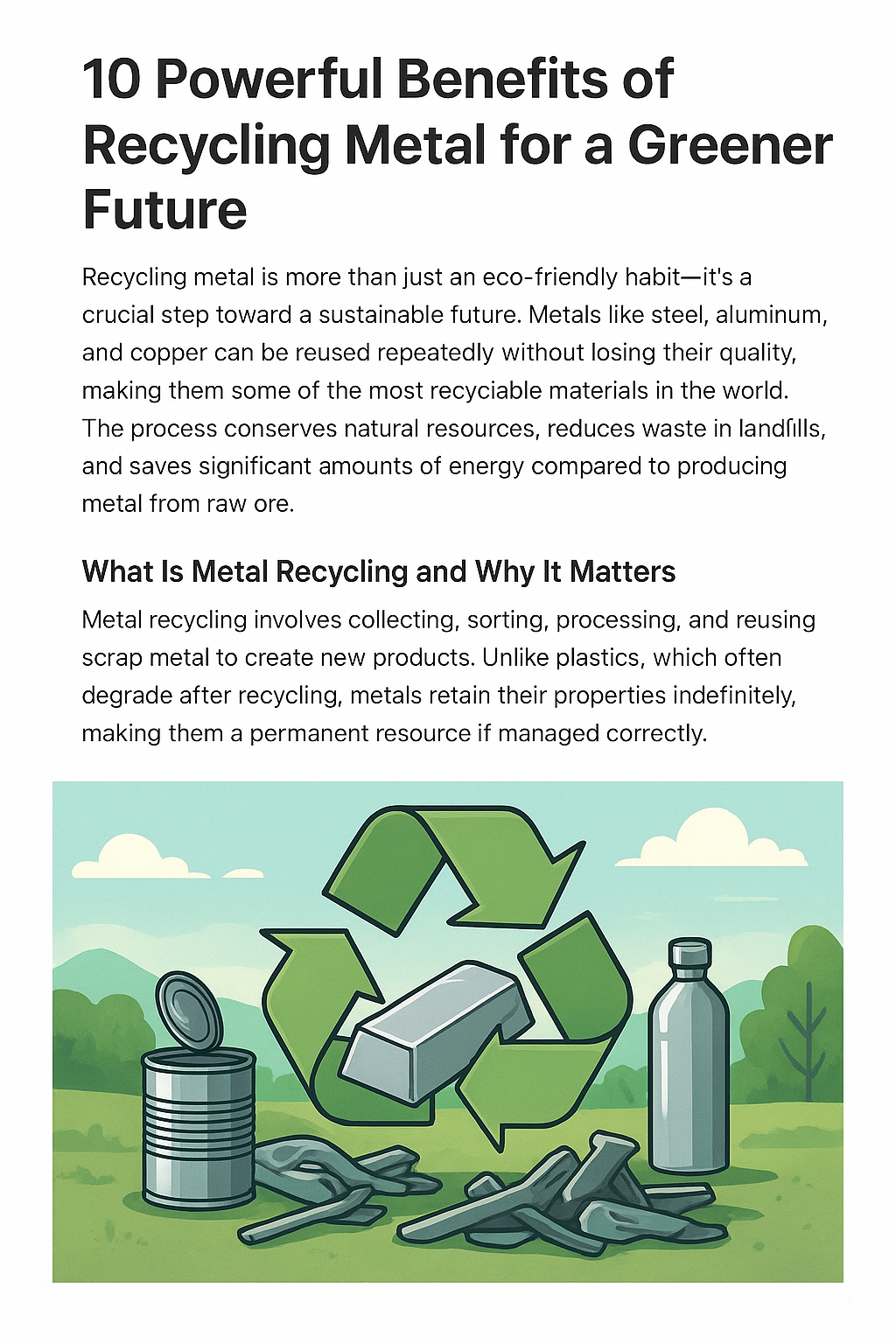
Bulk Waste Disposal Services: What Businesses Need to Know for Efficient and Compliant Waste Management
By BKThemes
Commercial enterprises in North America generate hundreds of millions of tons of bulky waste annually, posing logistical and regulatory challenges that demand expert solutions. This guide explains what bulk waste disposal services entail, how consolidated solutions from National Waste streamline operations for multi-site businesses, and the critical steps to ensure compliance, sustainability, and cost savings. Readers will learn to identify common waste types, navigate rental options, meet legal requirements, implement green practices, manage budgets, and leverage emerging technologies—all optimized for efficient and compliant bulk waste handling.
What Is Bulk Waste and Which Types Do Businesses Commonly Generate?
Bulk waste refers to large, oversized, or heavy materials that cannot fit into standard refuse bins. Managing these materials requires coordinated collection methods, specialized containers, and proper site handling to prevent safety hazards and regulatory violations. For example, an office renovation may yield multiple desks and shelving units that weigh upwards of 600 pounds each, necessitating roll-off dumpster service to remove them safely.
Bulk waste streams vary widely but share common characteristics that influence disposal strategy. Understanding these categories helps businesses plan container needs and disposal schedules precisely.
| Waste Category | Common Examples | Typical Volume/Weight |
|---|---|---|
| Furniture | Desks, Chairs, Cabinets | 200–600 lbs per item |
| Equipment | HVAC Units, Manufacturing Machinery | Up to 1,500 lbs per unit |
| Construction Debris | Drywall, Lumber, Concrete | Several tons per load |
| Pallets & Packaging | Wooden Pallets, Plastic Film | 20–50 lbs per pallet |
Heavy and bulky materials demand tailored disposal methods, leading into how businesses leverage specialized services to handle these diverse waste streams efficiently.
How Is Bulk Waste Defined for Commercial and Industrial Businesses?
Commercial and industrial bulk waste typically includes any non-containerized solid materials generated in large volumes or weights. Unlike residential waste, these materials exceed standard bin dimensions, often requiring lift-truck assistance or roll-off container placement. Defining this category precisely ensures that service providers assign the correct equipment and comply with local landfilling or recycling requirements .
What Are the Most Common Bulk Waste Types: Furniture, Equipment, Construction Debris?
- Furniture items such as workstations, seating, and display fixtures that accumulate during remodels.
- Heavy equipment including HVAC systems, production machinery, and large appliances retired after service life.
- Construction and renovation debris like drywall panels, lumber offcuts, and concrete rubble produced by tenant improvements or facility upgrades.
These categories guide container selection and disposal routing for maximum efficiency.
How Do Different Industries Produce Unique Bulk Waste Streams?
Different sectors generate distinct bulk waste profiles: industries
- Retail chains discard fixtures, pallet loads, and seasonal displays.
- Manufacturing plants produce scrap metal, outdated assembly line parts, and packaging crates.
- Hospitality operations remove commercial kitchen equipment, furnishings, and decorative elements.
Recognizing these industry-specific waste patterns informs customized service plans tailored to each enterprise’s needs.
Understanding bulk waste streams sets the stage for exploring how disposal services adapt to complex requirements across multiple locations.
How Do Bulk Waste Disposal Services Work for Multi-Location Businesses?
Bulk waste disposal services for multi-location enterprises integrate site assessments, container placements, and pickup schedules under a unified agreement. This approach centralizes communication, standardizes service levels, and provides a single reporting interface—enabling corporate waste managers to monitor all sites in real time. For instance, a retail chain operating 200 stores can align disposal cycles and receive consolidated invoices , reducing administrative overhead and ensuring consistent compliance.
By consolidating waste management across multiple facilities, businesses achieve predictable costs, simplified logistics, and scalable service delivery.
What Are the Benefits of Consolidated Waste Management Across Multiple Sites?
- Improved cost control through volume discounts and standardized pricing.
- Streamlined administration via one account manager and unified reporting dashboards.
- Enhanced compliance oversight with consistent training protocols and permit management.
These advantages translate into both operational efficiency and budgetary predictability .
How Does National Waste Streamline Bulk Waste Disposal for 50 to 5,000 Locations?
National Waste assigns a dedicated client services team to each enterprise account, deploying digital tracking tools to aggregate pickup data and environmental metrics across every location. The provider’s centralized platform offers interactive dashboards, automated alerts for schedule adjustments, and customizable waste-diversion targets —ensuring that businesses maintain visibility and control regardless of scale.
What Is the Step-by-Step Bulk Waste Disposal Process from Consultation to Pickup?
- Site Assessment – Measure waste volumes, identify obstacles, and recommend container types.
- Proposal & Agreement – Define service frequency, pricing tiers, and compliance protocols.
- Container Placement – Deliver roll-off, front-load, or compactor units to each location.
- Waste Collection – Execute scheduled pickups with tracked loads and weight documentation.
- Reporting & Optimization – Provide analytics for diversion rates, cost trends, and sustainability metrics.
This structured workflow supports consistent, reliable bulk waste removal that aligns with corporate goals .
With an understanding of process mechanics in place, the next step is selecting the right dumpster rental options to match specific waste streams.
Which Dumpster Rental Options Are Best for Commercial Bulk Waste Disposal?
Dumpster rental encompasses a variety of containers designed to handle bulky materials, from open-top roll-off units to enclosed compactors. Renting the appropriate dumpster type and size ensures efficient loading, prevents overflow, and maintains site safety. For example, a construction project may require a 30-yard roll-off for heavy debris, while a retail backroom renovation could utilize a 10-yard front-load container for packaging waste.
Selecting the right container optimizes labor, reduces turnaround times, and supports recycling initiatives through designated compartments.
| Container Type | Capacity (yd³) | Common Applications |
|---|---|---|
| Roll-Off Dumpster | 10–40 | Construction debris, furniture |
| Front-Load Dumpster | 2–8 | Retail backrooms, office waste |
| Compactor Unit | 20–30 | High-volume paper, plastics |
Matching container capacity to waste volume prevents delays and unnecessary service calls .
What Sizes and Types of Commercial Dumpsters Are Available?
Commercial dumpsters range from small front-load bins for daily operational waste up to 40-yard roll-off containers for major cleanouts. Compactor units offer space-saving solutions by compressing materials in situ, while recycling-dedicated dumpsters help segregate paper, cardboard, and metals for diversion.
How Do Roll-Off, Front-Load, and Compactor Dumpsters Differ?
Roll-off dumpsters feature open tops and are delivered via truck with a hook-lift mechanism, making them ideal for construction and bulky item removal. Front-load dumpsters attach to lift arms on collection trucks and suit high-frequency disposal sites like retail loading docks. Compactor units integrate hydraulic presses to reduce waste volume by up to 70–75%, supporting locations with large paper or plastic streams.
How to Choose the Right Dumpster Size for Your Business Waste Volume?
- Estimate average weekly waste volume by tracking disposal weights or item counts.
- Match container dimensions to site access constraints and loading equipment.
- Factor in peak removal needs for periodic cleanouts or renovations.
- Consult with service providers to analyze usage data and recommend scalable options.
This decision framework helps avoid over-ordering capacity and minimizes per-pickup costs .
Choosing the proper containers establishes a foundation for compliant operations under evolving regulations .
What Are the Key Regulations and Compliance Requirements for Bulk Waste Disposal in North America?
Bulk waste disposal in North America is governed by federal, state, and local regulations that classify materials, prescribe disposal methods, and require detailed documentation. Proper adherence prevents fines, minimizes environmental risk, and upholds a company’s reputation. For instance, disposal of industrial solvents must follow EPA’s Resource Conservation and Recovery Act (RCRA) standards, including hazardous waste manifests and transporter certifications.
Regulations and Compliance in Waste Management
Commercial bulk waste disposal is subject to a complex web of federal, state, and local regulations. These regulations dictate how materials are classified, the methods of disposal, and the necessary documentation to ensure compliance. Proper adherence to these rules is essential to avoid penalties and environmental risks.
United States Environmental Protection Agency (EPA), Resource Conservation and Recovery Act (RCRA) (Various Years)
This citation supports the article’s claims about the regulatory landscape governing bulk waste disposal, specifically referencing the RCRA .
Which Federal and Local Regulations Affect Commercial Bulk Waste Disposal?
- Resource Conservation and Recovery Act (RCRA) for hazardous waste classification.
- Clean Water Act provisions on runoff control during outdoor container placement.
- State-level landfill bans on specific materials like electronic waste.
- Municipal ordinances dictating pickup schedules and container permits.
Understanding jurisdictional requirements ensures compliant disposal across service areas .
How Do Businesses Ensure Compliance with Hazardous and Industrial Waste Rules?
Businesses typically implement these practices :
- Conduct regular waste audits to identify regulated materials.
- Partner with licensed transporters and disposal facilities.
- Train staff on proper labeling, packaging, and storage protocols.
- Maintain chain-of-custody records and safety data sheets for hazardous loads.
What Permits and Documentation Are Required for Bulk Waste Disposal?
| Document Type | Issuing Authority | Purpose |
|---|---|---|
| Hazardous Waste Manifest | State EPA or DOT | Tracks generator, transporter, and disposal facility details |
| Container Placement Permit | Local Municipality | Authorizes on-site placement in public right-of-way |
| Recycling Diversion Report | State Recycling Agency | Verifies quantities diverted from landfill |
| Safety Data Sheet (SDS) | Supplier/Manufacturer | Provides chemical composition and handling instructions |
Securing these documents underpins legal disposal and prepares businesses for audits .
With compliance in hand, companies can pursue sustainable practices that enhance environmental performance .
How Can Businesses Implement Sustainable Bulk Waste Practices and Improve Environmental Impact?
Sustainable bulk waste practices involve reducing, reusing, and recycling materials before disposal to minimize landfill contributions. By sorting metal, cardboard, and glass into dedicated streams, enterprises divert valuable resources into recycling markets. For example, diverting pallets and packaging from general trash to recycling bins can reduce landfill tonnage by up to 30%.
Adopting circular economy strategies promotes corporate responsibility and often yields cost rebates from recycling partners.
What Are Effective Recycling and Waste Diversion Strategies for Enterprises?
- Implement on-site sorting stations with clear signage.
- Partner with specialized recyclers for organics, metals, and electronics.
- Conduct periodic waste characterization studies to refine stream definitions.
- Introduce employee training programs that reinforce proper disposal habits.
These measures drive continuous improvement in diversion rates .
How Does National Waste Support Zero Waste and Waste-to-Energy Initiatives?
The provider collaborates with regional recycling facilities and waste-to-energy plants to channel non-recyclable bulk materials into energy recovery systems. By tracking diversion metrics in real time, National Waste helps clients set and achieve zero waste targets, integrating renewable energy credits into sustainability reporting.
How Can Businesses Track and Report Their Bulk Waste Sustainability Efforts?
Businesses can deploy digital dashboards and key performance indicators such as: waste management compliance .
- Diversion Rate (%) – Percentage of total bulk waste diverted from landfill.
- Recycling Yield (tons) – Absolute tonnage sent to recycling markets.
- Cost Savings ($) – Revenue generated from recycled commodity sales.
- Carbon Reduction (MTCO₂e) – Estimated emissions avoided by recycling.
Transparent reporting underscores environmental stewardship and informs continuous strategy refinement .
Optimized sustainability practices yield both ecological benefits and measurable cost advantages .
What Are the Cost Factors and Savings Opportunities in Commercial Bulk Waste Disposal?
Commercial bulk waste disposal costs derive from volumetric pricing, haul frequency, distance to disposal facilities, and processing fees for special materials. By consolidating pickups and negotiating scale-based rates, businesses can secure lower per-ton charges and reduce administrative fees. For example, a multi-site enterprise that consolidates billing may lower overall disposal costs by up to 20%.
Cost Factors and Savings in Waste Disposal
The cost of commercial bulk waste disposal is influenced by several factors, including the volume of waste, the frequency of hauls, the distance to disposal facilities, and fees for handling specific materials. Businesses can potentially reduce costs by consolidating pickups and negotiating rates based on the scale of their operations .
Waste Management Association, Commercial Waste Disposal Pricing and Strategies (2022)
This citation provides context to the cost factors and savings opportunities in commercial bulk waste disposal, as discussed in the article.
How Is Commercial Bulk Waste Disposal Priced?
- Volume-Based Fees – Charged per cubic yard of container capacity used.
- Weight-Based Fees – Applied per ton of waste delivered to disposal sites.
- Flat-Rate Contracts – Offer fixed monthly or annual pricing for defined service levels.
- Special Material Surcharges – Additional fees for regulated or hard-to-process items.
Selecting the optimal pricing structure hinges on accurate waste generation data .
What Are the Cost Benefits of Using Consolidated Waste Management Services?
- Volume discounts through aggregated load volumes across all locations.
- Reduced invoice processing costs with single monthly billing.
- Lower administrative overhead from centralized account management.
- Enhanced negotiating leverage for recycling revenue-sharing agreements.
These elements combine to produce tangible savings for large enterprises.
How Can Waste Auditing Optimize Bulk Waste Disposal Costs?
- Recording detailed waste generation by category and site.
- Analyzing disposal patterns to identify underutilized containers.
- Recommending right-sized container adjustments or pickup frequency changes.
- Implementing continuous monitoring and periodic re-assessment to capture evolving needs.
Optimized audits align service delivery with actual waste profiles, preventing wasted capacity and unnecessary fees .
As waste streams evolve, emerging technologies offer new ways to enhance disposal efficiency and insight.
What Are the Emerging Technologies and Innovations in Bulk Waste Disposal Services?
Emerging technologies such as IoT sensors, data analytics platforms, and automated collection vehicles are transforming bulk waste management. Sensors embedded in dumpsters relay fill-level data in real time, enabling predictive routing and reducing unnecessary haul trips. For instance, smart bins equipped with weight and volume sensors support dynamic scheduling that can cut collection costs by up to 25%. Waste Management Trends
Integrating these innovations enhances operational agility and sustainability performance .
How Are Smart Waste Management Systems and IoT Improving Bulk Waste Disposal?
Smart systems deploy interconnected sensors that:
- Monitor container fill levels and compaction ratios continuously.
- Trigger service requests automatically when thresholds are met.
- Provide geolocation tracking for enhanced logistics planning.
These capabilities reduce manual inspections and drive data-driven decision-making .
What Role Does Data Analytics Play in Waste Stream Optimization?
Data analytics platforms aggregate container usage, route efficiency, and material composition metrics to uncover optimization opportunities. By visualizing seasonality, identifying under-served sites, and forecasting peak volumes, analytics tools enable waste managers to refine service parameters and minimize over-servicing or missed pickups.
How Are Businesses Adopting Automated and Efficient Waste Collection Solutions?
- Automated electric collection vehicles for quieter, greener operations.
- Robotic arms on trucks to handle front-load dumpsters without manual labor.
- Integration of routing algorithms that adapt daily routes based on real-time data.
These advanced solutions support safety improvements and cost reductions while enhancing service reliability .
Continuous innovation in bulk waste disposal empowers businesses to stay ahead of operational and sustainability goals.
Operational excellence in bulk waste management depends on integrating proper processes, containers, and technology while meeting compliance and cost objectives. Partnering with a single-source provider for consolidated services ensures consistency, transparency, and scalable support as waste profiles and regulatory landscapes evolve.



